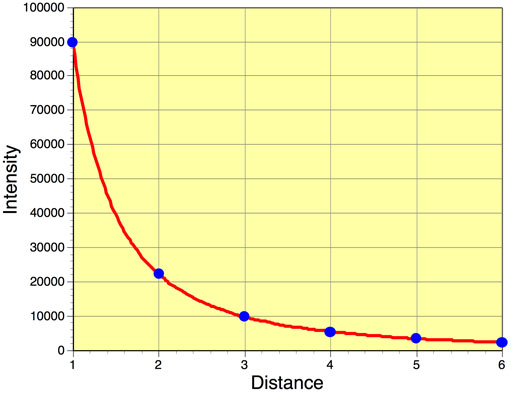Emelyne
GAUDICHAU, Julien PICHON, Daphné
GUENEE
@Lumos_Stupefix
C.elegans versus
VEML 6070
-
A Biosensors project
Ever
wanted to know the extend of the UV you’re exposed to but don’t
have access to a UV sensor ? Well we have got the solution ! During
the first week of the Biosensors, the Lumos_Stupefix
team, composed of Emelyne,
Daphné
and Julien
used a biological alternative that is the Caenorhabditis
elegans.
In
this blog post, we will try to show you
which of the biological sensor and electronic sensor is the most
precise to detect different intensities of UV light.
For our project we decided
to use a wavelength of 390 nm because
previous researches have shown that C.elegans
respond best to this wavelength.
For
seven days we worked
to see to what extent C.elegans
are precise to detect
the different intensities of UV light compared to the precision of
the UV sensor. Before jumping in, here is
some information about the sensors.
What
is the biological sensor ?
C.elegans
are micro-organisms also known as round
worms. They are little transparent
worms that mesure
1 mm and that live
in the dark. C.elegans
don’t have light sensing organs such as
eyes, but they do
however have neuronal connections
that allow them to sense light. In other
words they don’t see, they sense. C.ellegans
tend to avoid light by fleeing from its origin; they are described as
negative phototaxis.
What is the electronic sensor ?
The
UV sensor we used for our experiment is the
Adafruit VEML 6070 UV sensor. It detects
the UV in a
room and gives a values between 0
and 65 535 Arbitrary
Unit. This means that there is no specific unit for the value that is
given by this device. The VEML 6070 sensor is
easy to use with an arduino (a little card
that looks similar to an integrated circuit
that memorizes
and executes code).
About the biological setup
The
biological setup comprised of a binocular magnifying glass pointing to a
plate placed on top of a plastic box. Inside the plastic box was the
LED that lit up the plate for 5 minutes.
The plates where divided in 3 zones : 2cm diameter, 6cm diameter and 9 cm diameter. After the 5 minutes exposure, we counted manually the number of worm in each zone and expressed that number as a global percentage. We made this experiment for 5 different UV intensities : 0, 100, 150, 200 and 255.
The plates where divided in 3 zones : 2cm diameter, 6cm diameter and 9 cm diameter. After the 5 minutes exposure, we counted manually the number of worm in each zone and expressed that number as a global percentage. We made this experiment for 5 different UV intensities : 0, 100, 150, 200 and 255.
About the electronic sensor
The
electronic sensor was connected to an Arduino. Here, we also tested 5
different intensities of UV, the same as the biological setup. The
setup was very similar to the biological one : the LED was inside the
plastic box, and light up
the plate. We took 4 different measures (at
different place on the plate) for each
intensity.
The
VEML 6070,
a sure value ?

a sure value ?
After
testing the UV
sensor, we can assert that
yes, UV sensor gives
a good index of UV intensity. Our test shows a curve close to a
famous function that is « The
intensity of the light decreases
with the distance of receptor.»
The
graph against represents this law.
However,
our experiment lacked measurements between
0 and 1 cm, so we
don’t have enough data to fit the curve.
What
about the C.elegans ?
So,
did our little
worms react as
we expected? Not really. Indeed, the
majority of worms stopped in zone 2 and didn’t
go to zone 3, which was the farthest from
the UV.
Another
weird behavior of
worms is that they were moving to
zone 2 when the intensity of UV was 0… So
we had to
consider that worms were influenced by
other factors....
After
speaking with our tutor, we came with the following conclusions :
- Worms are influenced by a gradient of temperature in the plate
- Worms are influenced by the light of the binocular magnifying glass
- Worms are influenced by other factors such as food in the medium or light of the day…
- Worms are worms and don’t care about what is logical
So,
who wins the title of best sensor ?
After
carefully comparing our data, we can
conclude that both C.elegans
and UV sensor are sensitive to UV. However,
there is a real difference in their precision
and we can assert that the UV sensor is more reliable than C.elegans.
So if there is one thing you need to take from this post, it’s that
nothing beats a good old electronic UV sensor!
If
you want to know more…
you
can watch this
video : blogoscience.
Eyeless C. elegans Worm Senses Light, 2008.
And
read this
scientific article :
« Light-sensitive neurons and channels
mediate phototaxis in C. elegans ».
Consulté le 20 janvier 2017.
This is the storify of our project : https://storify.com/julien_pichon/lumos-stupefix
You can find here more informations about our protocol on github :
https://github.com/learningthruresearch/Biosensors2017/tree/master/LumosStupefix




